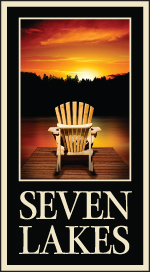Let us first start with an intriguing fact about our forests and wooded areas. It inhabits many species of animals and is critical for our climate. The more we cut down to build our homes, the less they have to survive. Next time you drive through a subdivision or even a community; look around. Count the trees in between each home, then count the homes themselves.
As humans we control what happens with our beautiful planet. The Earth doesn’t need us, but, we need the Earth. Conserving a large percentage of acreage as green space within a community has taught us that; there are other ways to create a peaceful way of living without disrupting Mother Nature. If you had the chance, would you play your part? It could be something as simple as planting a new tree every year, or it could be something larger; like, building a home in a community who believes in a better world.
“Conservation is a state of harmony between men & Land” – Aldo Leopold
It has been said that people who live near green space or parks are happier. This could be the simple fact they have less distraction with city life or simply because they know they are living in close quarters with wildlife and all of the benefits the green space has to offer. Homeowners who live with protected green space at their disposal tend to dive into more recreational activities, such as walking, hiking, or just observing the landscape around them.
Being able to walk through your community to see wildlife flourish, beautiful trees, and gardens brings a sense of pleasure and lifts your spirit. Your community should have this feeling, after all, you’re living there. Protecting and preserving natural resources is an important part of the Earth’s survival. Using waste water treatment facilities helps us protect our lakes and wetlands. There are Seven Lakes surrounding the conservation phases, some larger than others. Keeping those lakes clean and free of pollution is part of the design.
Three small tips that may help you when caring for the world we live in:
Conserving water, paying attention to how much you’re using.
Planting trees or flowers that will attract wildlife, turning your property into a haven for wildlife.
Using your compost to make topsoil for your garden. This reduces items in our landfill as well as enriches the earth’s soil.
